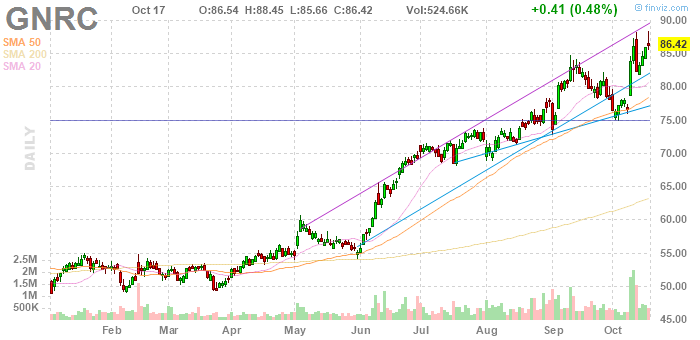During this time of the year in California, where I live, dry, usually hot Santa Ana winds are common. The combination of single-digit humidity levels and high winds are perfect conditions for spreading wildfires, such as those which resulted in the deaths of 85 people in the Camp Fire in 2018. I believe California is merely the first state to experience this and other power companies in other states will follow suit. The electric grid is growing less dependable, in my opinion. Severe weather events will always happen in some capacity.
Cut the Power
California’s utilities, Pacific Gas & Electric the most prominent but not the only one, are responding by cutting off power prior to the onset of the forecasted Santa Ana condition in areas deemed to be high risk for wildfires. In early October, a good chunk of Northern California, including the Napa Valley wine region, was cut off from power. PG&E is already likely insolvent due to liability suits from previous fires, and so they decided to limit their liability by taking preventive action.
How would you like it if, as a customer who has their utilities cut right when you want to run the air conditioning, to be without power? It seems like a step back in progress, as well as a huge inconvenience. It likely will affect property values in the affected areas.
What Can You Do?
Fortunately, due to improved technology, individual homeowners have more options now when the power goes out. One is to install solar panels and a battery. A Tesla Powerwall battery combined with a Tesla-owned SolarCity solar panel system is one option, but there are other battery manufacturers such as LG. It’s expensive, with a Powerwall battery system at about $14,000 and a solar panel system $20,000 or more based on size. Wealthy preppers might be able to afford it and it is “clean” but probably out of the price range for many homeowners.
Generac

Another less expensive option is a home generator. Generac (GNRC) is a market leader in this space, and GNRC stock is up over 70% YTD 2019. A homeowner can buy a Generac system that can power your whole house for under $10,000, which may sound like a lot compared with a small generator you can buy from Home Depot, but it is a better, more dependable option. A homeowner can hook a Generac directly to a gas line and can have the generator automatically click on in the event of a power outage. As with most other things in life, it is best if you plan ahead and install a Generac (or another generator system) at a time when you don’t need it.
IMO
I don’t own a Generac (although I am thinking strongly about it) and I don’t own GNRC directly. GNRC has gone up a lot and is now trading at 20 times earnings, and so I advise caution as to timing your purchase of the stock if you buy it at all. Nevertheless, I believe the combination of severe weather throughout the country coupled with utilities less willing to take liability risk during these events coupled with declining population in some rural areas (such as my native Upstate New York, New England, farm areas, and other areas not participating in economic growth for any number of reasons) will result in more frequent power outages. Homeowners will adapt by becoming more self-reliant and buying either a solar and battery system (expensive) or a high-end generator system (less expensive).
